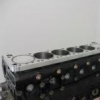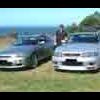Fuel Pump Flow Data... Lph Vs Psi
Announcements
-
Similar Content
-
Latest Posts
-
All I can say Duncan is good luck and I hope that Neil did not run any E85 in Cheryl. I have recently experienced the full spectrum of fuel tank issues in my R33's that had been caused by E85 and contaminated fuel. When you take the cover off the top of the tank and have a look inside you will get an understanding of how easy it will be. Best case situation is clean fuel with minimal contamination. My GTR was like this and it was a very simple operation to just grab the fuel pump carrier bracket and slide it up and out of the tank. My three GTS_T's had different levels of fuel contamination that was probably caused by E85 in the fuel. In the worst case all of the metal components in the tank had rusted to the point where there were pieces of rusted metal swirling around in the tank. This required the removal of the exhaust, the tailshaft, the complete rear cradle and the fuel tank. The components in the tank were that rusted that it took days to get the fuel pump carrier and the mounting brackets out of the tank. When the tank was finally cleaned, everything inside the tank had to be replaced. With the tank all back together I could then reinstall it in the car along with everything else that had to come out. Good luck and I hope that you find a clean tank.
-
By GabsReDeal · Posted
It is a two door. It is black and also still has the OEM wheels and stereo. Exact model would be KR_R32RGFEL_SS According to GTR-Registry.com is a 2 Door Coupe; RB20DE; 2WD no HICAS; MT.F5; (11L) Projector Headlamps and Fog Lights; (12_) Electronic Active Full Auto Air Con (Climate Control); (13-14SS) V Selection -- Which seems to be accurate description of my variant. Will try to upload a few pictures soon. The OEM wheels look like the below image. Image is taken from the goo-net-exchange website. -
Time: Saturday 18th January - 9am -10:30am Where: Cafe By Lamanna 10 English St, Essendon Fields VIC 3041 - https://g.co/kgs/mhVKvAB Registration: So we can give the cafe a heads up on rough booking numbers please rsvp below Registration Link: https://forms.gle/wPtfj9Gp8bvCiouo8
-
Welcome Gabriel. At least your car has a glorious RB and not the shitty CA18. As MBS206 mentioned all the good bits can be added later. Two doors or four?
-









Recommended Posts
Create an account or sign in to comment
You need to be a member in order to leave a comment
Create an account
Sign up for a new account in our community. It's easy!
Register a new accountSign in
Already have an account? Sign in here.
Sign In Now